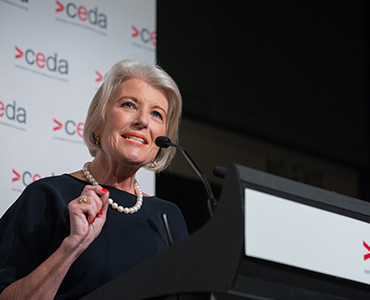Despite some positive progress over recent years, there is still a considerable gender pay gap in Australia, Workplace Gender Equality Agency Director Libby Lyons told a CEDA Women in Leadership event in Brisbane.
 Ms Lyons presented the latest findings from Australia’s Gender Equality Scorecard, based on a comprehensive data set comprising more than four million employees working across 11,000 organisations.
Ms Lyons presented the latest findings from Australia’s Gender Equality Scorecard, based on a comprehensive data set comprising more than four million employees working across 11,000 organisations.
Ms Lyons said the scorecard shows momentum for gender equality is building.
In the four years of reporting the agency’s data, the most change has been noted in employer action, a pleasing result.
“For the last three years our data set has shown key indicators moving in the right direction. But this year many of our graphs around employer action actually have a big kick in the tail,” Ms Lyons said.
“The biggest, most satisfying change that we’ve recorded in the last 12 months is a massive increase in employers analysing their pay gap.”
Data show the number of organisations conducting a gender pay gap analysis increased by 11 percentage points, from 27 per cent a year ago to 38 per cent.
“We’ve still got a long way to go but if we continue to see that year on year increase of 10 or 11 percentage point increases in the number of organisations that are doing a gender pay gap analysis, trust me, that national gender pay gap will go down quicker than we thought it would. But it’s up to employers,” Ms Lyons said.
Other positive changes included seven in 10 employers now have a policy or strategy to support flexible work, an increase of five percentage points.
The bad news, Ms Lyons said, is a significant gender pay gap across the workforce.
“When we look at total remuneration (including superannuation and all benefits) full-time working men in Australia take home on average $26,500 a year more than full-time working women,” she said.
“Over the four years we’ve been collecting the data, the pay gap has declined year on year by about two percentage points.
“It’s just far too slow.”
It was especially disappointing, Ms Lyons said, to see that the pay gap in the female-dominated industries of health and social services and education and training has actually increased in the last year.
And Ms Lyons dismissed claims the gender pay gap is due to women’s own choices.
“If that’s the case, why is the data telling us that there is a gender pay gap present across all manager categories and all occupations?” she said.
“And the gender pay gap is present across each and every industry in Australia.
“Whether you work in a male-dominated industry like construction or a female-dominated industry like education there is a gender pay gap favoring men.”
Ms Lyons attributed the gender pay gap to a range of factors including lack of flexibility, particularly in senior roles, and workforce segregation.
Ms Lyons told the Queensland audience that for employers headquartered in their state, both the full-time total remuneration pay gap and base salary pay gap are both higher than the national average. However, there had been a 12 per cent increase in employers conducting a gender pay gap analysis, which was a sign a “light bulb” had switched on in Queensland in terms of gender equity.
Also speaking at the event, Financial Services Council Chief Executive, Sally Loane said the gender pay gap is extending into superannuation, posing a risk to the financial security of Australian women in retirement.
“Based on the very latest ABS figures the difference between genders in superannuation balances near retirement is a massive 42 per cent,” Ms Loane said.
“In other words, the superannuation balances of women are 40 per cent lower than those of men.”
The situation poses a clear retirement wealth gap for women, which is exacerbated by women living longer in retirement, and means more women rely on the government to live in retirement.
“We as women need to take more responsibility for our financial independence both before and at retirement,” Ms Loane said.
She called on those present to discuss superannuation with young women and girls from their very first job.